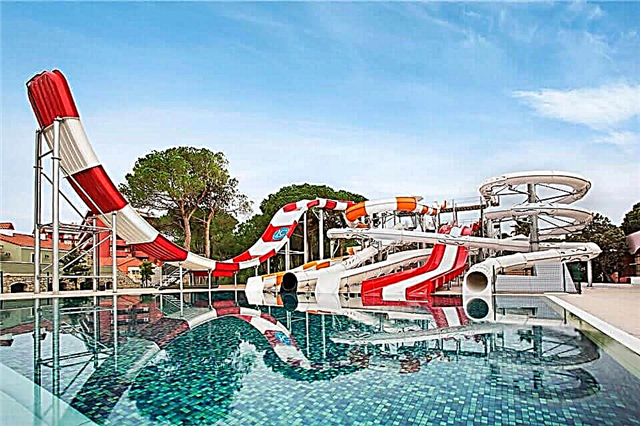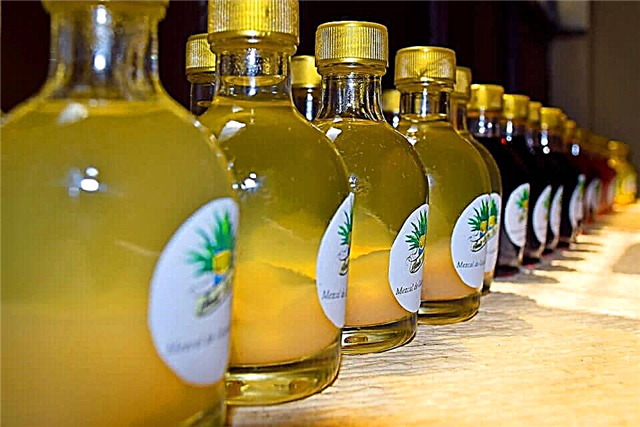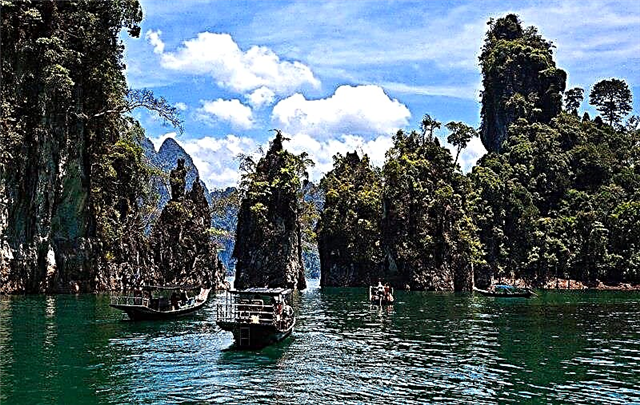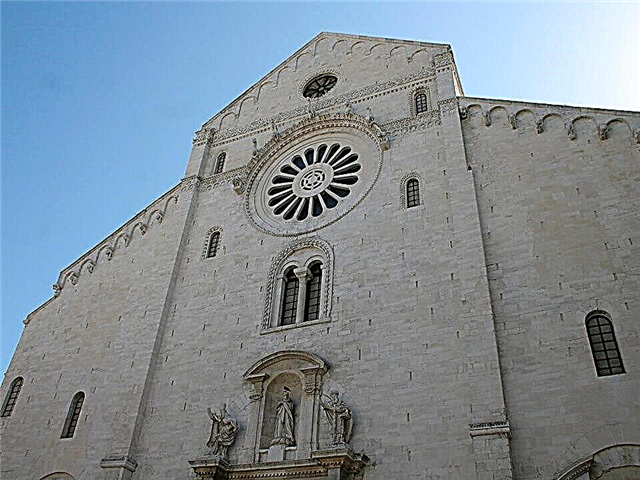The history of the ancient city of Italy, Bari, begins with the small fishing harbor of Barium in 181 BC. NS. Now it is an important economic center of southern Italy (the second most important after Naples), preserving the architectural heritage of the past centuries. We will tell you which of the many attractions in Bari should be visited by tourists in the first place. Thus, you will be able to independently compose the best route for walking around the city.
Bari castle

A massive, slightly gloomy structure, recalls the pictures of the cruel Middle Ages. It seems that the wars just recently ended at the powerful sloping walls, mysterious rectangular towers, and prisoners of the 9th century languish in dungeons, when the Bari (Swabian) castle was used as a prison. Barracks. The architectural structure, erected (at the behest of the King of Sicily in 1131), was changed, completed with a fortress wall, bastions, and a protective moat.
Together with the graceful elements of the Renaissance style, the architecture of the castle has always confirmed its military power. The entrance to the castle is on the south side. Walking along the massive bridge, you can see the courtyard, the bastion, the main tower of the castle. Now it houses a historical museum; exhibitions and excursions are often held. Walking along the embankment of the city, you can see the extraordinary night illumination of the castle. It seems that medieval events take place in the illuminated halls.
Castle address: Piazza Federico II di Svevia.
Basilica of Saint Nicholas

In the building, built in honor of the patron saint of the city of St. Nicholas, services, Catholic church events are held, like many centuries ago. The relics of the revered saint are kept in the Basilica with a priceless gift brought from the Turkish Myra. The basilica was erected in the period 1087, 1197. Initially, the church served as a court chapel and had the status of a palace temple. It contains many frescoes, arches, columns, rich, solemn decorations. Many decorative elements are borrowed from the ancient buildings of Byzantium.
In the center of the church there is a sculpture of St. Nicholas the Wonderworkers, made of pure silver. The bishop's throne is made of a single piece of marble, and the entrance to the basilica is guarded by two hornless bulls, who indicated (as follows from an interesting legend) the place where the famous basilica was built. The Church is of great importance for the Christian world, being a place of pilgrimage to the myrrh-streaming, miraculous relics. Every year, on the day of the appearance of the relics, the holiday is held on May 9 (22). The basilica is located at Largo Abate Elia, 13.
Cathedral of Saint Sabine

The church is the second largest in the city after the Basilica of St. Nicholas. Otherwise it is called the Duomo (Cathedral). The cathedral was built in the 13th century on the site of a destroyed Byzantine church and is dedicated to Bishop Sabina of Canosa. His holy relics are kept. There is also an ancient icon "Odigitria", created by the Evangelist Luke in the VIII century. Numerous old frescoes, arches, columns create a beautiful, majestic view of the ancient Cathedral of St. Sabine.
The facade of the building is decorated with an extraordinary rose-shaped window with figures of fantastic animals. You can see it from anywhere in the Old Town. Services, liturgies, and masses (even for children) are regularly held in the Cathedral. Together with them you can get acquainted with the interior decoration of the church. See ancient wall graffiti depicting crosses that the crusaders left before their campaigns.
The address of the architectural landmark: Piazza dell'Odegitria, 1.
Bari Vecchia

The old town is a narrow street leading to the port, harbor. It is imperative to walk along them in order to feel the atmosphere of the city, to see the real life of the population of Bari (such as it was in the Middle Ages). Hanging linen, artisans' shops, old fountains, water columns. Among the architectural puzzle of narrow labyrinths, 40 churches and over 120 sanctuaries have been amazingly built.
Walking along the narrow promontory near the port, you can see many sights, but most of them are closed to the public. At the very shore, the fortress of St. Anthony rises, an old fort (it houses a gallery), an old monastery of St. Scholastica. It is now a university building. Rest and lunch are best organized in a small café in the Old Town and taste the fish dishes delivered from the nearby port.
Mercadante Cassano Forest

Acquaintance with the surroundings of the city, natural attractions of Italy can be carried out not only on the unique coasts, but also, for example, in the Alta Murgia National Park. Most of the park is occupied by the famous Mercadante Cassano Forest. This is a successful combination of natural landscape with man-made human activities. Among tropical vegetation, beautiful karst ravines, rocks, caves created by nature for many millennia, there are areas for safe walks and recreation.
Even majestic dinosaurs once reigned in the Altamura Valley, located near the forest. There are many tourist villages and places to live near the forest. Convenient places for picnics and recreation have been created on its territory. The forest is located in Cassano delle Murge. You can visit it along with an excursion, drive yourself on a rented car, taxi.
Embankment

An evening walk along the Adriatic coast is impossible without the city's beautiful waterfront. It is impossible not to notice, not to visit this place. The embankment is located in the new part of the city. It was built in the XIX-XX centuries outside the old center, it is considered the longest embankment in Europe (30 km).
The embankment begins at the Paleze district and continues to the fishermen's village Torre A Mare. There is a paid car park at the beginning of the embankment. The view of beautiful medieval buildings, palaces, amazing plants, rich sea air, comfortable benches, original lanterns make the walk pleasant at any time of the day.
Bari-Murattiana

The new city of Bari is located in the eastern part of the settlement. A new part appeared as an extension of the space for the construction of modern buildings after the demolition of the fortress wall in 1813. The name appeared in honor of the King of Naples, Joaquino Murat. Unlike the labyrinthine streets of the old part of the city, the project of European standards of the beginning of the 19th century has been implemented here. Straight streets, Avenue Victor Emanuele II (Corso Vittorio Emanuele II), large squares with fountains, surrounded by majestic architectural masterpieces.
The new city is filled with the sounds of nightclubs, restaurants, cafes. These are monuments, theaters, museums, art galleries, parks. The main pedestrian street (Via Sparano, about 1 km long) is full of boutiques and shops for every taste. Here you can always feel the stormy life of modern Italy. In the new Bari there is a train station where guests of the city come.
Theater Petruzzelli

The fourth largest theater in Italy was reopened in 2009 (following a devastating fire in 1991). The theater was built at the end of the 19th century, financed by the Petruzzelli family. On the square next to the sea, a place was chosen where the festivities were most often held. During the opening, Meyerbeer's opera "The Huguenots" was performed in 1903.
Residents of the city have always dreamed of their own cultural center. Therefore, the decision to restore the building was made by the townspeople with approval and great financial support. The first performance was Puccini's Princess Turandot in 2008. The voices of many famous masters sounded from the stage of the theater. Including Luciano Pavarotti, who was born in the city. The theater seats 1,490 spectators to enjoy contemporary and classical music.
Theater address: Via Salvatore Cognetti 8.
Grotte di Castellana

The first successful survey of a system of underground caves created by the natural power of an underground river took place in 1938 by the famous speleologist Anelli. His bust is installed at the entrance to the first cave. For millions of years, huge halls, bizarre corridors, decorated with crystalline formations of stalactites and stalagmites, were formed. The most beautiful cave of the complex is the White Cave. The natural white color of the walls is enhanced by special lighting, making it the home of fabulous gnomes.
You can go to the cave along the Desert corridor (in the form of a narrow gorge) with a wall height of 450 m. Separate halls of the caves have been cleaned and ennobled. There are hiking trails leading to a depth of 72 m. The short route is about 1 km long and is designed for 1 hour. The excursion costs 12 €. The long route (3 km, duration 2 hours) costs 16 €. There are benefits for pensioners, schoolchildren, students.
Address: Apulia, Castellana Grotte. You can get there by the suburban train Sud-Est.
Art Museum of the Province of Bari

The Pinacoteca Provinziale is a rich art gallery of works by the masters of the south of Italy, who lived at different times. The country's Museum of Fine Arts began operations in 1928. The collections were originally housed in the Government Palace. Then the museum moved to the luxurious building Palazzo della Provincia. It adorns the famous embankment of the city. In a separate room of the gallery, there are works by the famous Italian artist Corrado Giaquinto, after whom the Pinakothek is named.
The gallery displays masterpieces of the Venetian school of painting of the 15th and 16th centuries, Neapolitan iconography, painting, sculpture, and modern works. Apulian majolica, old nativity scenes (paintings depicting the Nativity of Christ), works by Tuscan artists "Macchiaioli". The 12th century wooden figure of Christ is considered to be the rich heritage of the Pinakothek. The gallery is open from 9 am to 7 pm from Tuesday to Saturday. The entrance fee is 2.5 €.
Church of San Marco dei Veneziani

The old church is often called Byzantine. This is due to the ancient structure of the Byzantines, located in this place until the 13-15th centuries. The construction of the new church began after the liberation of the city from Saratia. The Romanesque façade is distinguished by a rose window, an arched portal with rich stucco molding, and the famous winged lion (symbol of Venice and the Church of St. Mark).
Inside the church there are carved Renaissance altars, a sacristy, stained-glass windows, paintings, statues, and antique furniture. The entrance to the sacristy is decorated with polychrome tiles with images of Madonna del Pozzo, Saints Mark, Antonio. The church is located on the main square of the city between the Basilica of St. Nicholas and the Cathedral. Entrance to the church is allowed without payment. Photo and video filming is prohibited.
Archaeological Museum

The history of the development of the Provincial Museum, founded in 1875, reflects the development of civilization in the Apullian region from ancient times to the present. New artifacts from archaeological excavations are constantly added to the museum fund. Among them are household items made of bronze ceramics by masters of the Daunia, Messapia, and Peucetia peoples. The museum is the owner of the most complete database of artifacts of the ancient civilization, created by these peoples before the advent of Apulia. Of interest is the collection of terracotta figurines made by the inhabitants of ancient cities.
Figures, called Tanager, depict the postures of men and women more naturally. In the long corridors there are many old vases, statues of gods and heroes. The museum is located on the territory of the New Town at Piazza Umberto I in one of the university buildings. Guided tours are available by prior arrangement. The ticket price is 5 €. The museum is temporarily closed for free visits. Open from Tuesday to Saturday. Beginning at 8.30, end of work at 18.30.
Aldo Moro square

On the square there is a railway station (built in 1864), bus stations of intercity, city bus routes, forming a central transport hub. There is a metro exit on the square. The square is named after the victim of the terror of the "Red Brigades" Aldo Mora, chairman of the Council of Ministries of Italy. His important political career began during the reign of Benito Musolini.
The main goal of Moro was to expand the democratic foundations in the country, to create a new democratic system. It took 4 years to investigate the crimes of the "Red Brigade", but those who ordered the high-profile terrorist crime of the century have not been found. In the park near the square, his bust is installed not far from the fountain, built in honor of the Apulian Aqueduct. The main building of the university, located at 1 Piazza Umberto, is named after Aldo Moro.
Aqueduct Palace

The Apulian Aqueduct is the largest variant of an ancient aqueduct in Europe. The palace was erected under the direction of Duilio Cambelotti in 1932 to celebrate the unsurpassed wealth of the earth and water. This is reflected in the design of the imposing façade of the palace. The availability of drinking water in this place in Italy was a big problem. The population used rain supplies, which present great health problems in the form of frequent poisoning and epidemics.
The idea of bringing water to Puglia from elsewhere through the Apennine tunnel was realized in an ambitious aqueduct project. The first streams of the purest water entered the region in 1915, giving life to more than 400 settlements in the region. Now in the museum, located in the palace, walls, floor, ceiling. The windows contain decorative elements associated with water. The entrance to the palace is free of charge. Interesting tours of the palace are organized.
Piazza Ferrarese

On the south side of the historic center, facing the city's beautiful waterfront, there is a square named after the birthplace of the Ferrer merchants. In the 16th century, the main trade road passed here. A fragment of an ancient road discovered by archaeologists is one of the most unusual places on the square. On the left are the arches of the Murat Hall, where exhibitions of works by contemporary artists are held. On the right side there is an old fish market, as well as a food market with a large selection of fruits and vegetables.
The square ends opposite the old harbor. The place is beautifully decorated, it is a graceful entrance to the Old Town. The old port and the coast are clearly visible from the territory of the square. In the evening, young people, lovers for romantic meetings, walking tourists become the owners of the square. There are many cozy cafes and bars on the square. In the northern part, the square connects with the Piazza Mercantile.
Piazza Mercantile

This place of the city was considered the heart of trade in ancient times. It houses the Customs and Administrative Palaces. The Column of Justice or the pillar of shame rises as an everlasting monument to the historical past of Italy. In ancient times, people who could not pay off debts on time were tied to him for shameful punishment. The column is guarded by a stone lion sitting on top with the inscription "Guardian of Justice" on its chest.
It is believed that the pillar of shame was built in the 16th century. The severity of the punishment was reduced at the request of Pietro di Toledo. The square connects New Bari with the Old, and is the elegant history of Bari, the city's secular living room. Right on it there are comfortable tables at which you can always relax and taste delicious coffee.
Theater Margherita

The Art Nouveau style rectangular building, decorated with towers and an openwork arch, was erected in 1914. These architectural elements are found on the facade of the building. A unique feature of the building is the foundation of the building in the form of piles installed on the seabed. This helped to circumvent the ban on the construction of theaters within the city, acting under an agreement between Petruzzelli and the city administration.The building, made in pastel shades, has an original asymmetrical design.
There are many rectangular windows of various sizes along the perimeter of the building. The cornice of the building, fortified on massive columns, is decorated with bas-reliefs and stucco elements. A wide dome rises above the pediment. Restoration work is underway with the aim of organizing a museum of contemporary art in the theater building. At the same time, the facade will retain its original appearance overlooking the city embankment. Tourists have the opportunity to admire the building, listen to the guide for detailed information about its history.
Theater address: Piazza IV Novembre, Bari.
Port

An important site of the city has always played a special role in the south-eastern part of Italy as a major transport center. Trade with the countries of the Balkan Peninsula and the Middle East was important for the development of the country's economy. This determined the creation of a convenient infrastructure for a multifunctional port. The docks are well equipped, there is excellent communication between all types of maritime transport. There are even two separate docks for fishing boats.
From the embankment you can see snow-white cruise liners, huge ships designed for different purposes. Every year, about 150 ships arrive here, over 2 million people (including 400,000 cruise ship passengers). At the port, you can order a cruise across the expanses of the Adriatic Sea, washing the coast. The cruise terminal is located in the center, which is very convenient for vacationers.
Alberobello

Traveling around the neighborhood can become an acquaintance with a real fairy tale. Alberobello, a UNESCO World Heritage Site, will amaze any traveler with its trulli (traditional dry-masonry houses). They resemble the dwellings of gnomes from children's fairy tales. Amazing houses with a conical roof (trulli stands for dome) are distinguished by their ability to quickly collapse if the blocking stone is removed from their walls. There are no such buildings anywhere else in the world. At the same time, the walls of the building are thick, providing the necessary coolness in the heat.
The name of the town in translation from Latin means "tree" and "war". Reliable military mechanisms were made from the mighty oak trees that had been growing on this territory for a long time. The easiest way is to visit the place along with an excursion, listen to legends, learn the historical facts of the unique surroundings. You can rent a car and drive about 55 km along the SS100 road, taking the SS172 road in Casamassim. At the height of the holiday season, it may be difficult to find a parking space. Another way to travel is to use the train or the services of the Ferrovie del Sud Est (FSE) carriers.
Sassi di Matera

Multi-tiered cave dwellings were built in the quarters of Sassi (translated as stones) for many centuries, starting from the Neolithic era. The grotto houses were cut down in the thick of inaccessible rocks, providing a safe living for the ancient inhabitants of the area. Streets were formed from them, public services, restaurants, cafes, hotels were set up in separate rocky caves. Some of them are functioning now. In the thickness of the tuff over a deep valley, dwellings were created, in which the roofs of some became the floor of the next houses, etc.
Park of cave churches (about 150 units), houses in the rock have been included in the UNESCO World Heritage List since 1993. They are considered exceptional examples of the careful use of nature's resources. Now the general unsanitary condition of the cave town does not allow living here permanently. In the 50s, the inhabitants of the cave city were relocated to the modern houses of Sassi, the rock city was returned to its original beauty, preserving a natural fortress in an important area of the Civita quarter.
The unusual type of buildings was often used to embody the ideas of artists and filmmakers. Matera is sometimes called "Second Bethlehem". The film "The Passion of the Christ" was filmed here. You can get to one of the most ancient cities on the planet by train, which leaves every two hours.











